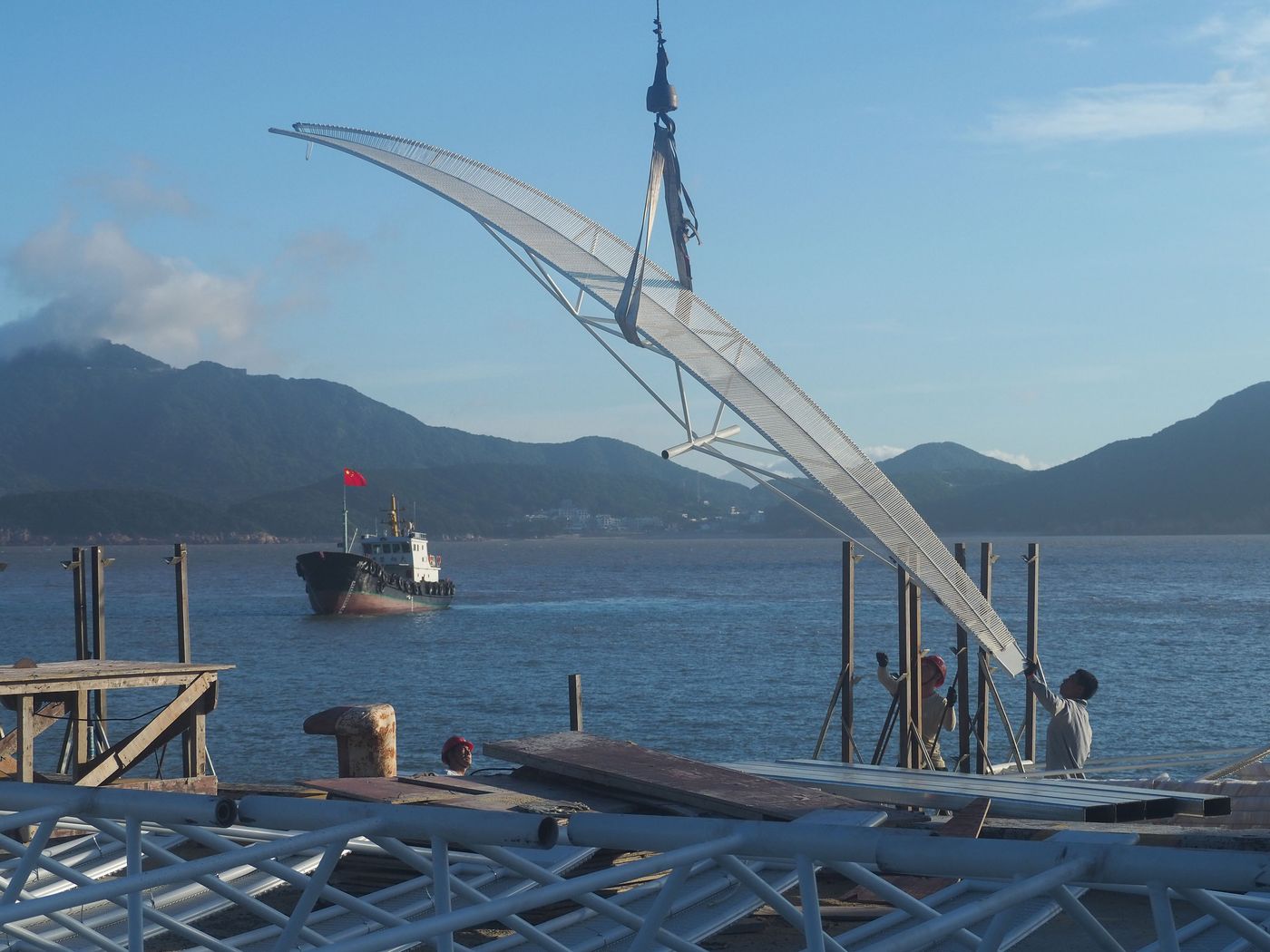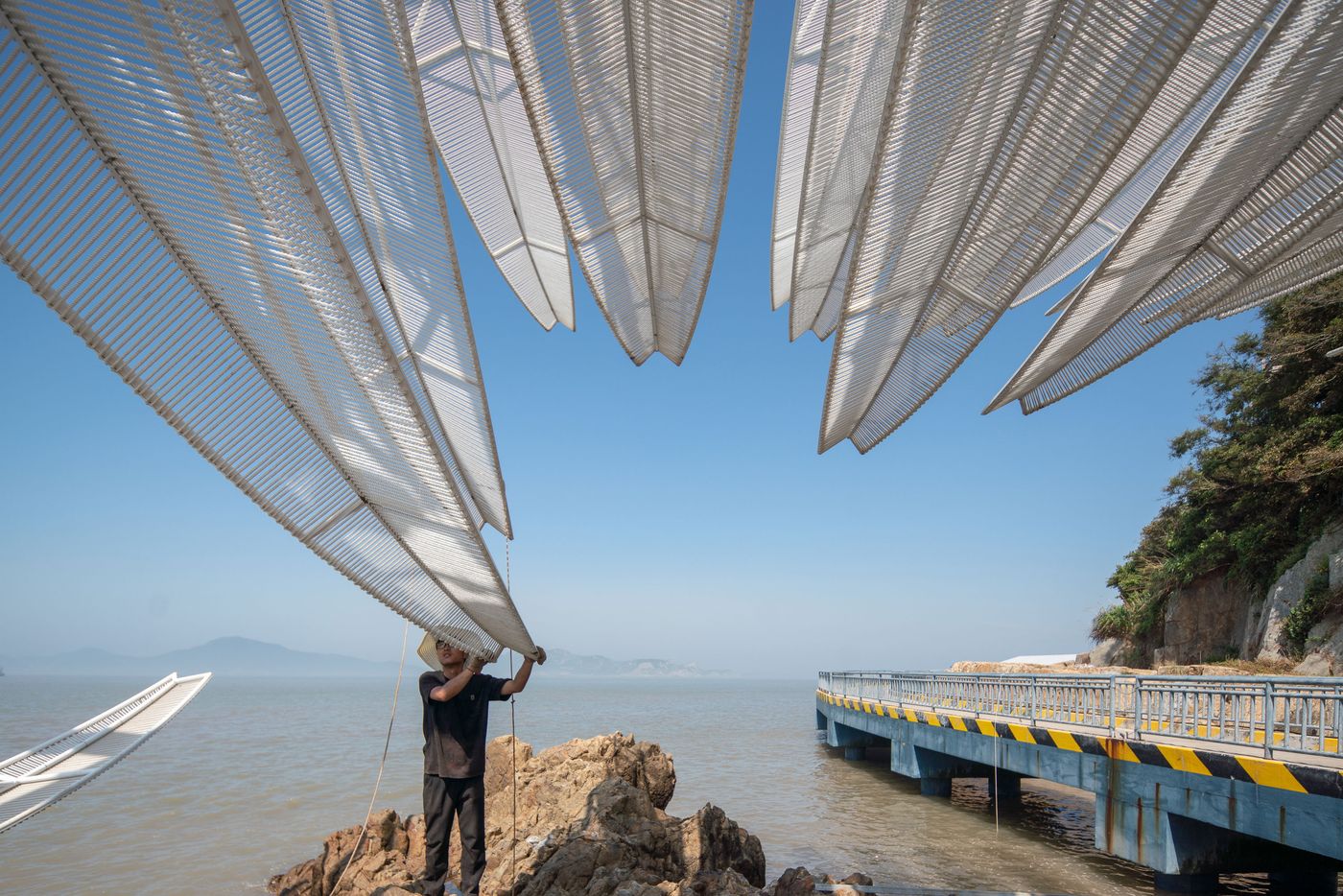A Kinetic Seaside Pavilion Brings Life Back to a Chinese Island
Words by Yatzer
Location
Chaishan Island, China
A Kinetic Seaside Pavilion Brings Life Back to a Chinese Island
Words by Yatzer
Chaishan Island, China
Chaishan Island, China
Location
Located on an abandoned cargo pier on Chaishan, a small island that makes up part of the Zhoushan archipelagos in the eastern Chinese province of Zhejiang, GN Architects' Seaside Pavilion, a delicate, feather-like structure that gently sways in the wind definitively stands as a poetic counterpoint to the island’s rugged coastline. Designed as part of a local revitalization initiative, the Pavilion serves as both an artistic landmark and a social space, embodying movement, transience, and the island’s enduring spirit, faced as it is with the shifting tides of urban migration and rural abandonment. With its kinetic, wind-driven blades, the structure blurs the boundary between art and landscape, serving as a gathering place for the island’s remaining elderly residents as well as offering vising tourists a contemplative pause before stepping into island life.
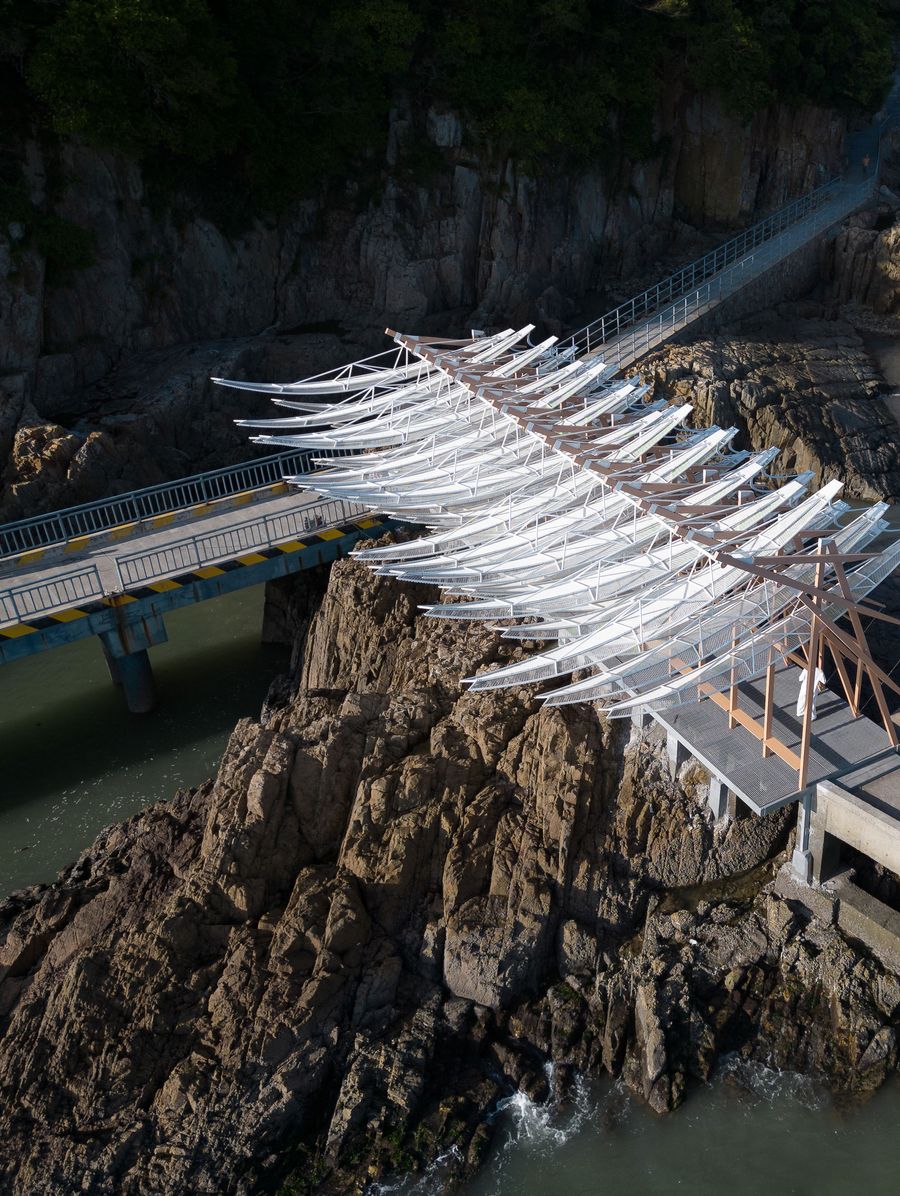
Photography by Liang Wenjun.
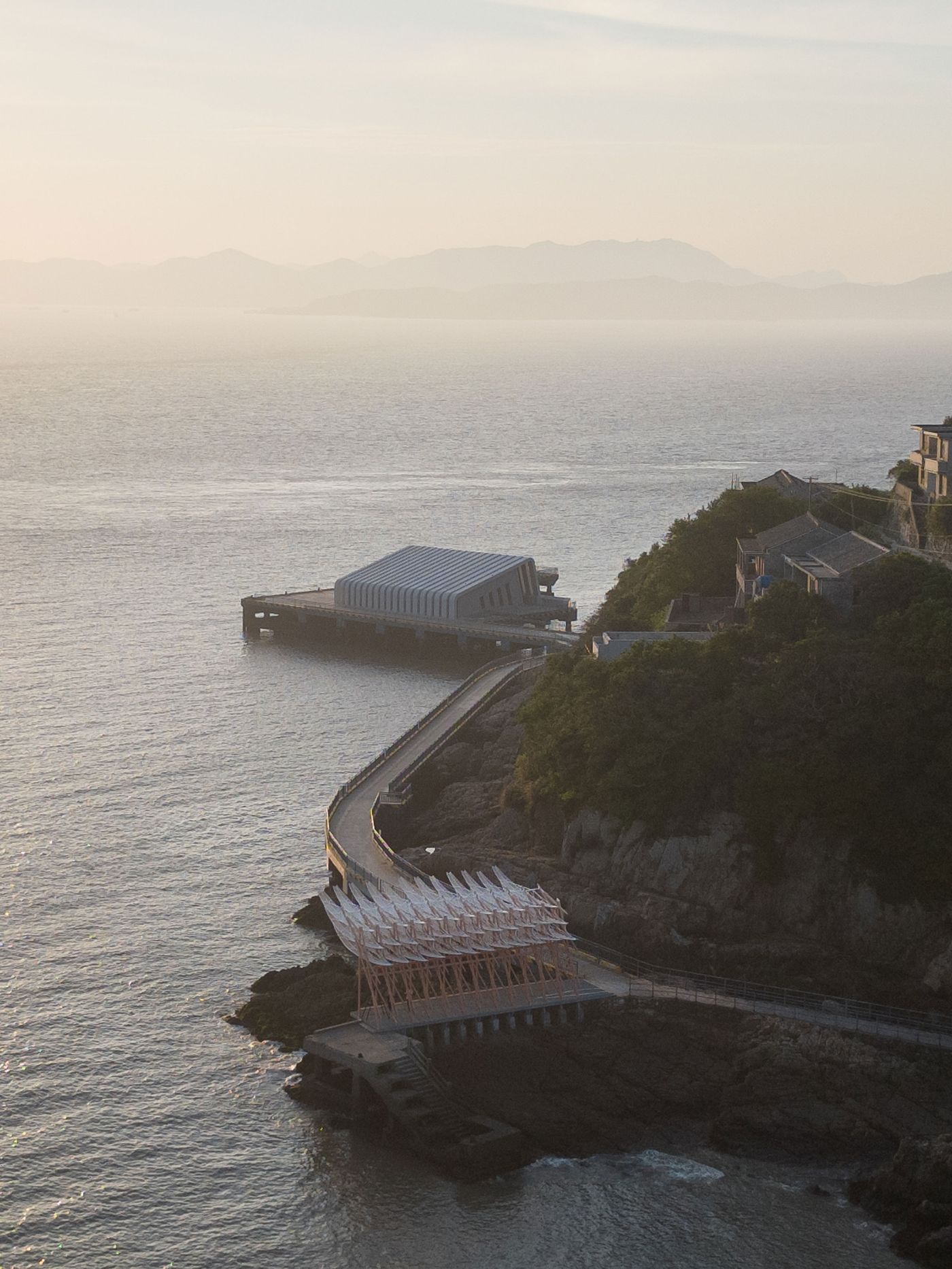
Photography by Liang Wenjun.
Video by Liang Wenjun.
Once a bustling fishing hub with over 1,600 residents, today Chaishan Island home to fewer than 100 elderly inhabitants, the result of dwindling marine resources and economic opportunities shifting to the mainland. In response to this decline, the Zhoushan government launched the "Hello, Island" initiative, seeking to breathe a new sense of life into the archipelagos’ depopulated islands through art, design, and social engagement. Chaishan, selected as one of the program’s pilot locations, is now the site of multiple cultural and architectural interventions aimed at revitalization. The Seaside Pavilion, the winning design of an open competition, is the first realized project, setting the tone for a renewed dialogue between the island’s history and its future.

Photography by Liang Wenjun.
Video by Liang Wenjun.
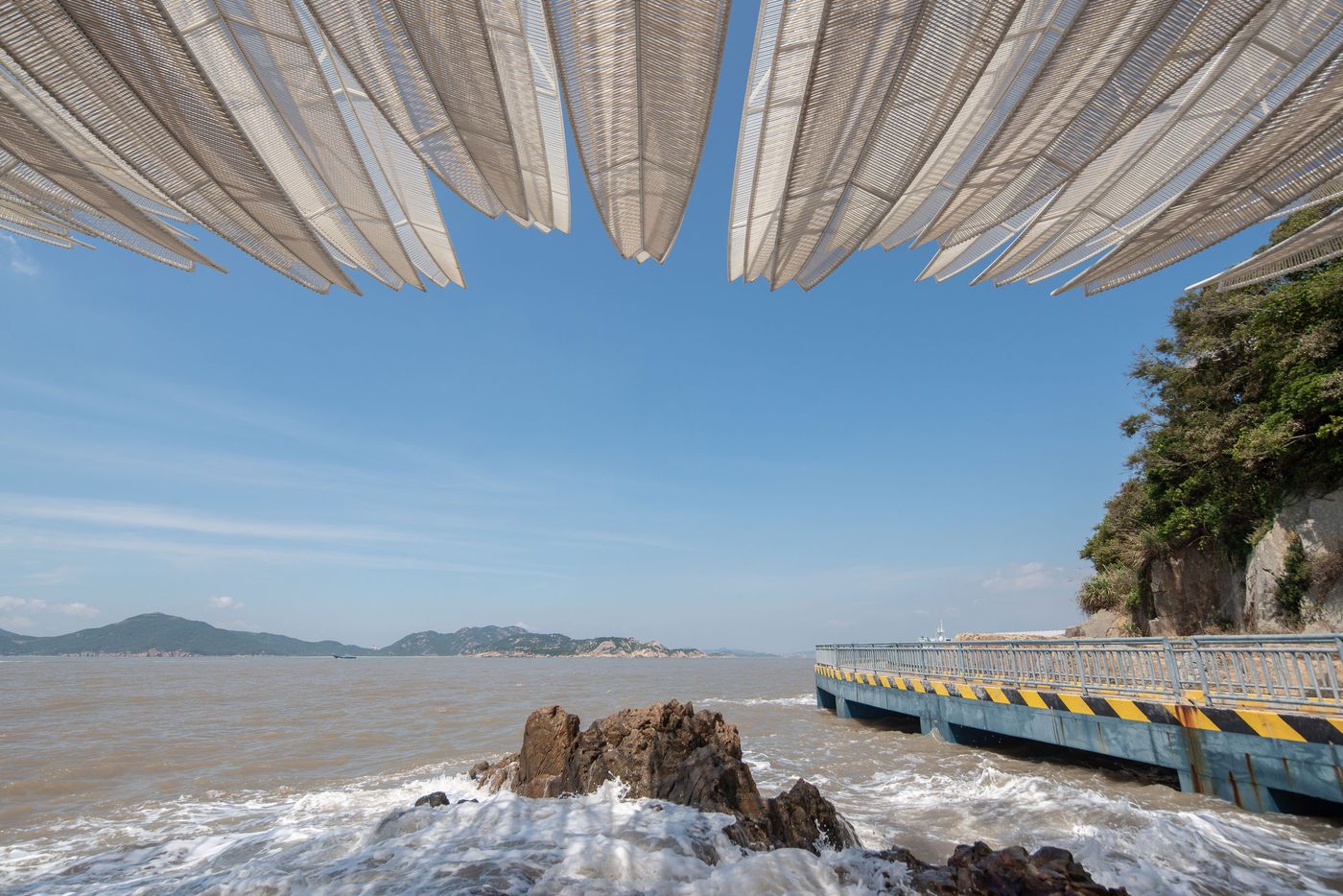
Photography by Liang Wenjun.
Inspired by traditional Chinese village customs, where a large tree traditionally located at the village entrance once served as a communal gathering spot, the Seaside Pavilion recreates a similar sense of arrival. Situated on a defunct cargo pier dating back to the 1960s—between the modern passenger terminal and the island’s central village—the installation repurposes the existing structure into a welcoming place designed for quiet reflection.
The Pavilion’s form is defined by a series of elongated, seven-meter-long blades suspended from a steel frame. Initially envisioned as a tide-responsive structure, the design evolved to become wind-activated, ensuring a more immediate and perceptible movement. The blades, reminiscent of delicate feathers, sway with the sea breeze, creating a mesmerizing dance of light and shadow against the expansive backdrop of the sky and ocean. Their motion varies in response to the ever changing wind speeds—barely perceptible in a gentle breeze, pronounced in stronger gusts, and capable of being secured in extreme weather conditions, such as typhoons.
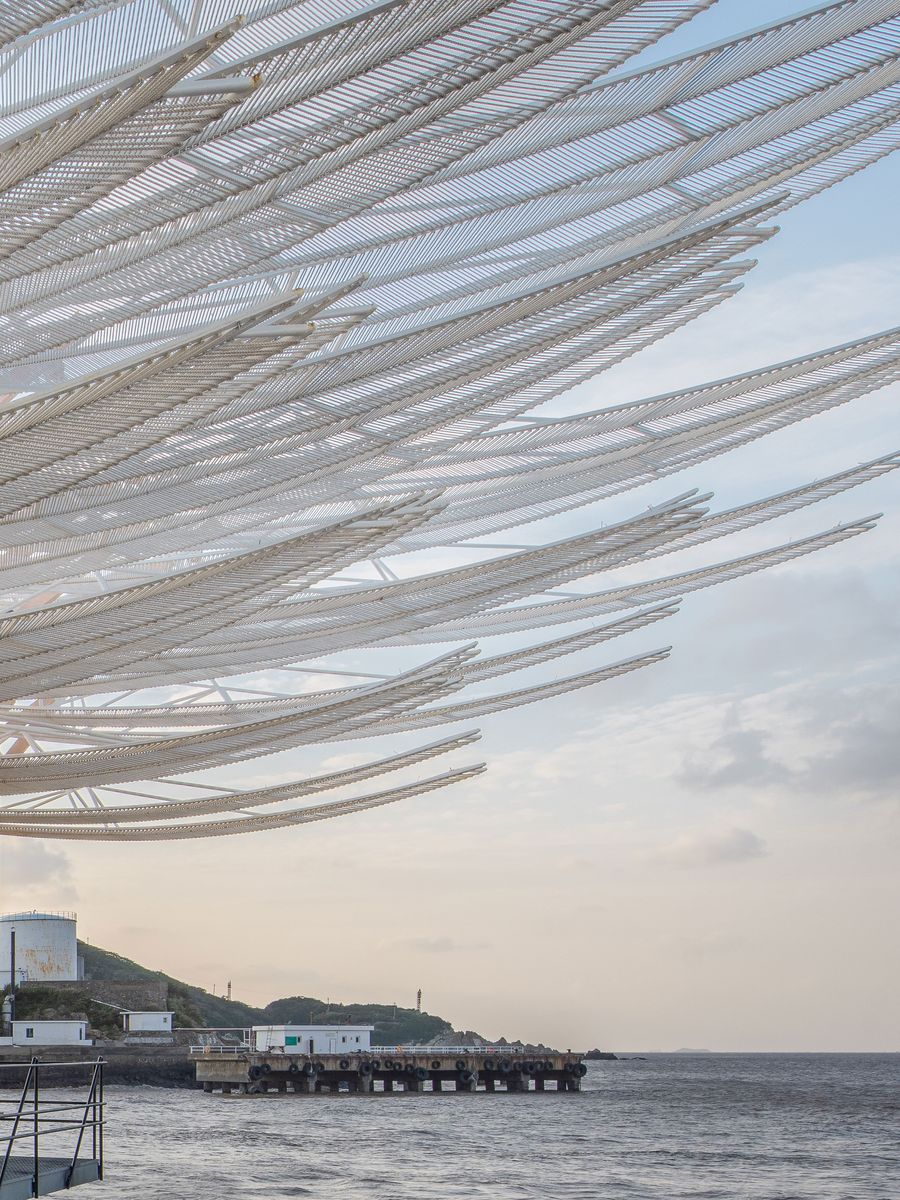
Photography by Liang Wenjun.
Video by Liang Wenjun.
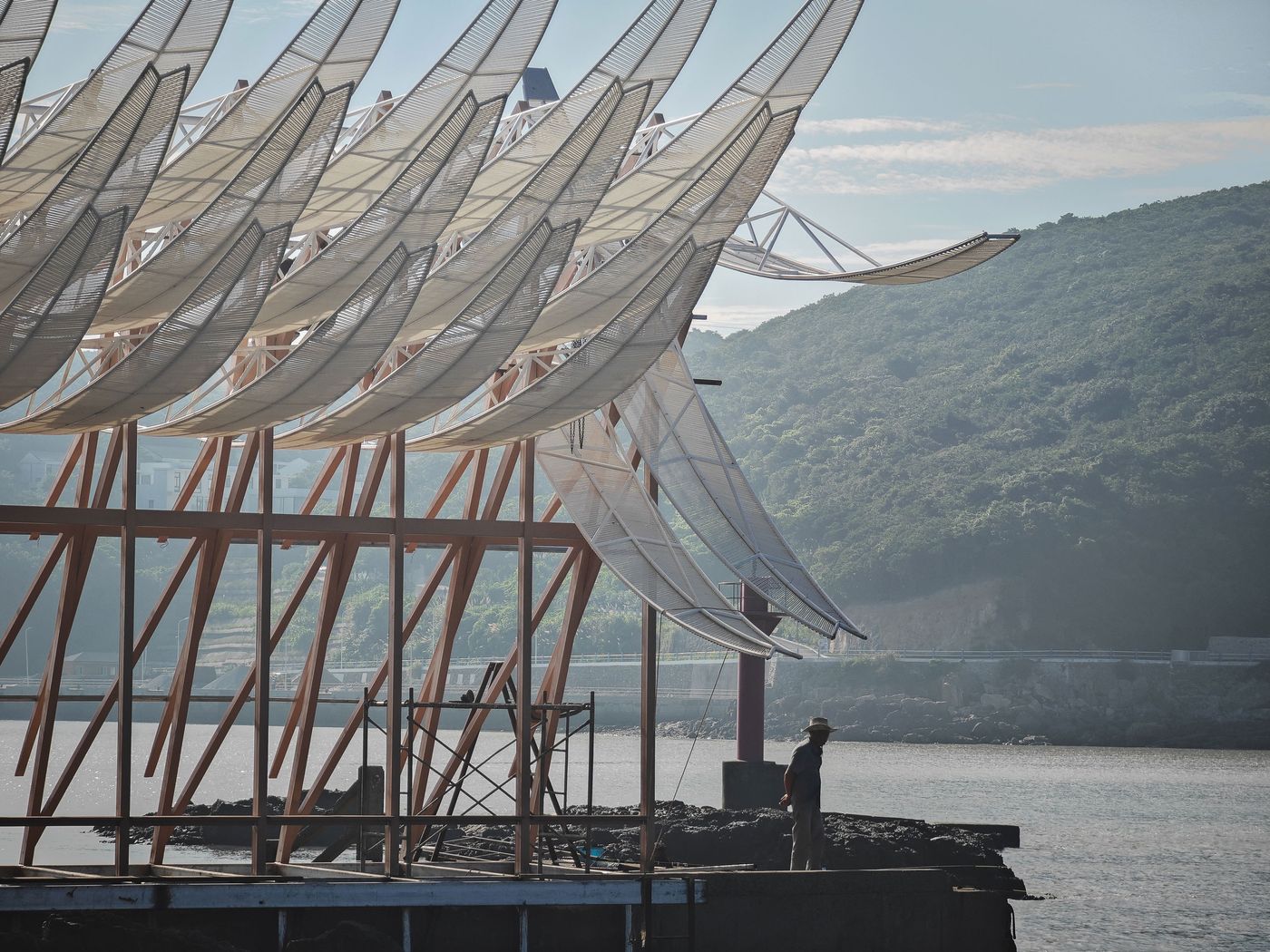
Photography by Liang Wenjun.
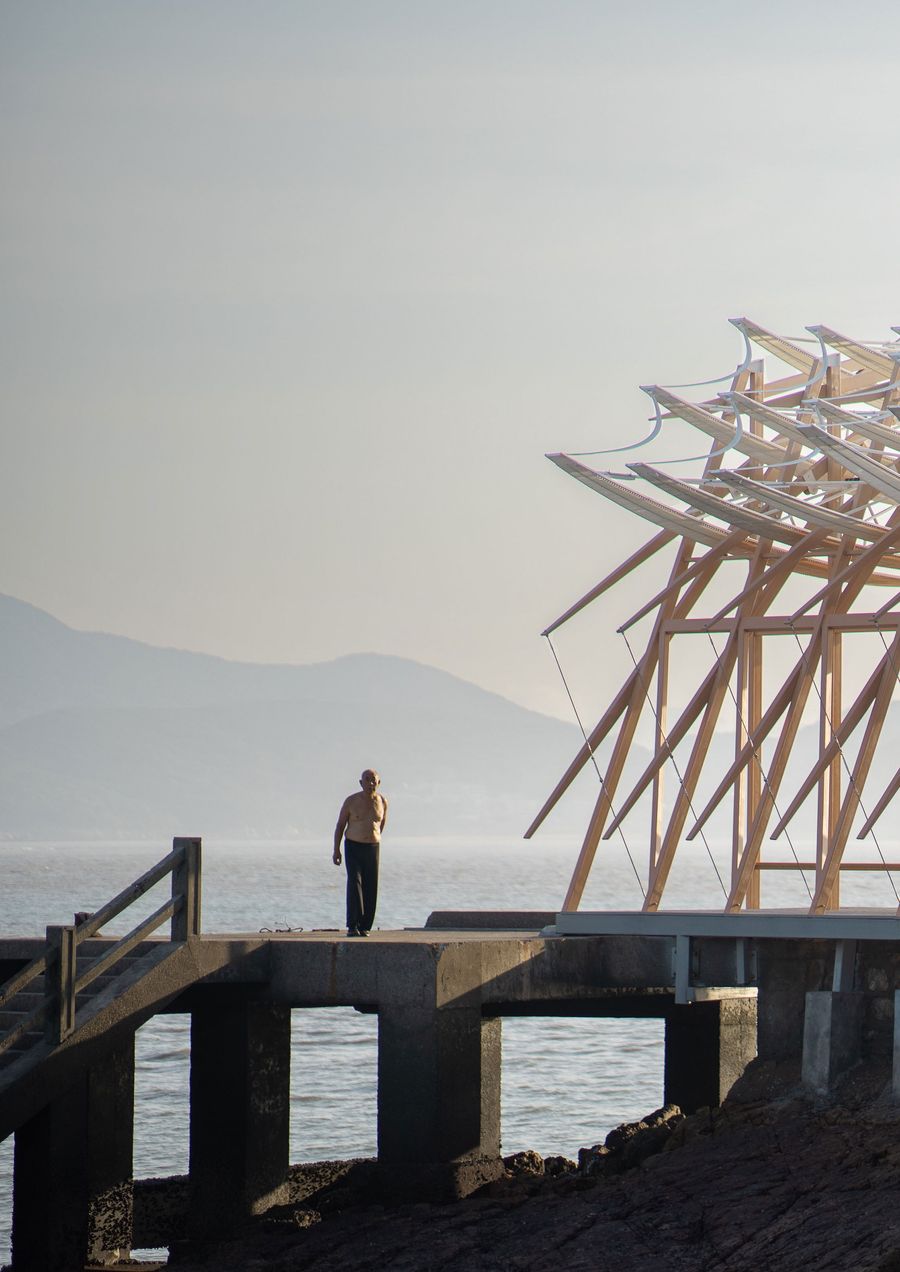
Photography by Liang Wenjun.
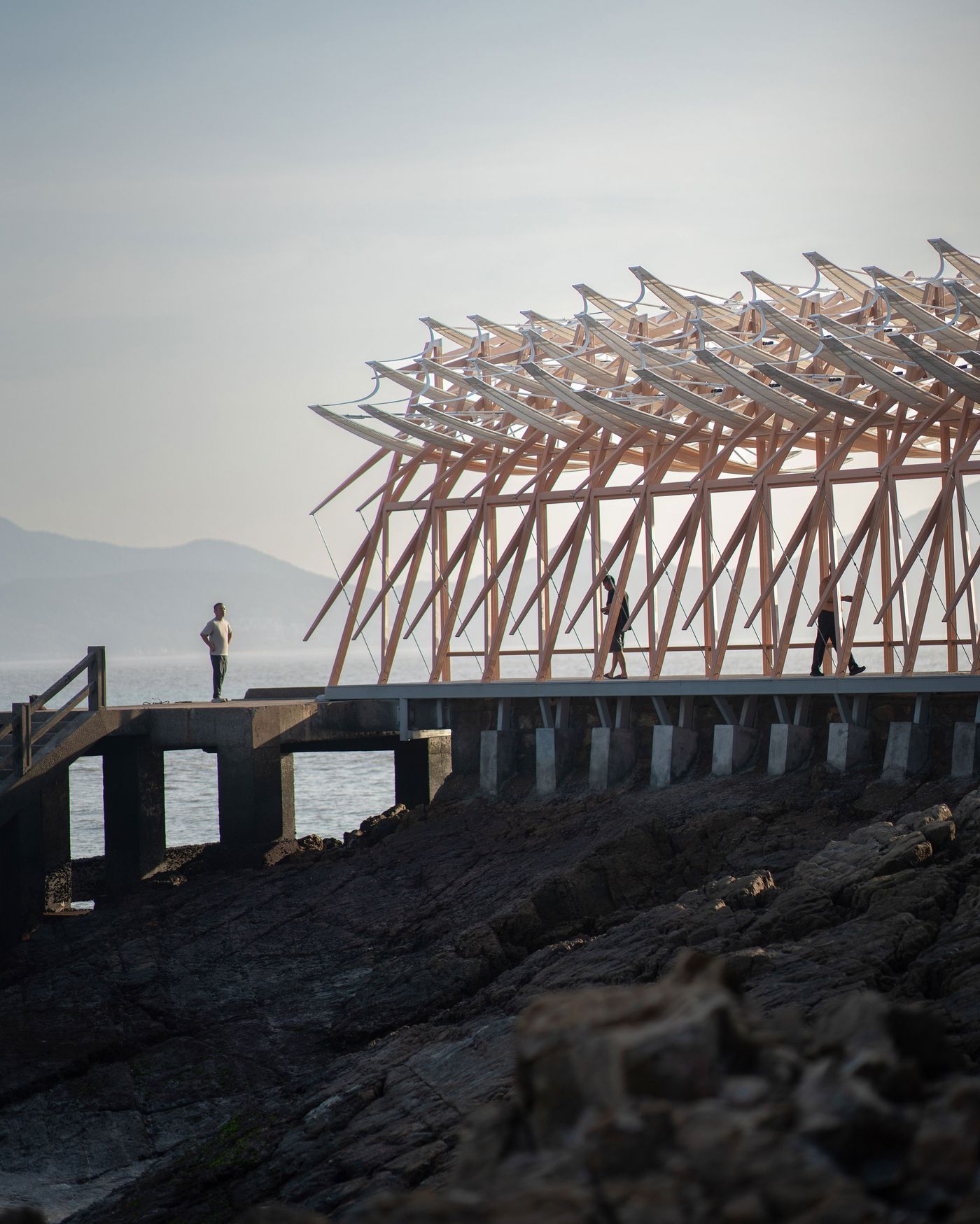
Photography by Liang Wenjun.
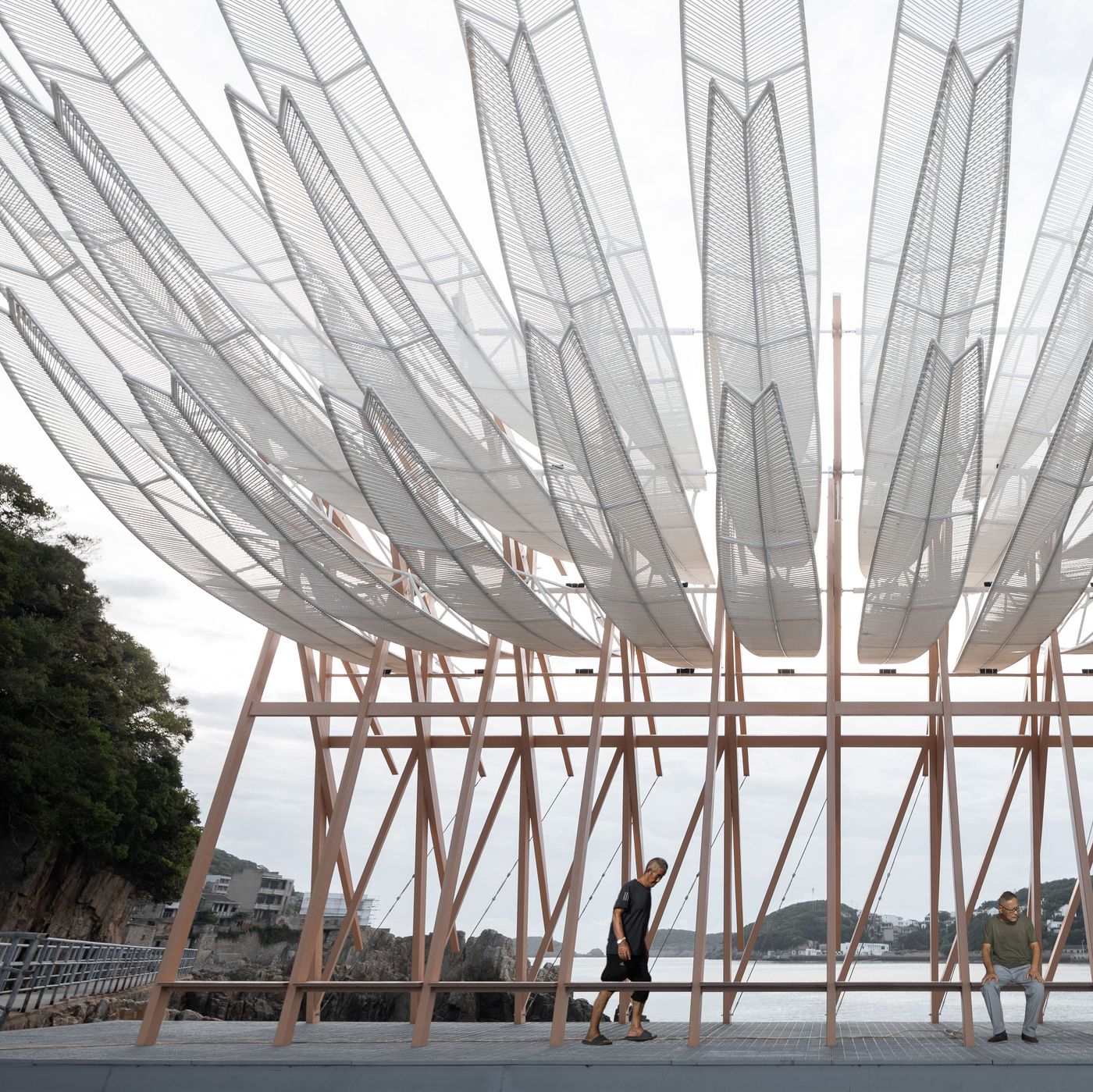
Photography by Liang Wenjun.
Constructed with corrosion-resistant steel and high-strength fishing ropes, the Pavilion is engineered for resilience against the island’s harsh marine climate. Each blade is precisely counterbalanced for fluid motion, while rubber linkages prevent unintended collisions. Prefabricated on the mainland and transported by sea, the structure reflects a meticulous balance between technological precision and poetic expression.
More than a static monument, the Seaside Pavilion is an evolving experience—its presence changes with the weather, the time of day, and the vantage point of the observer. For the remaining islanders, particularly the elderly who gather on the pier, it provides a new focal point, a place to watch the ferries come and go, just as they once greeted visitors at the bustling harbour.
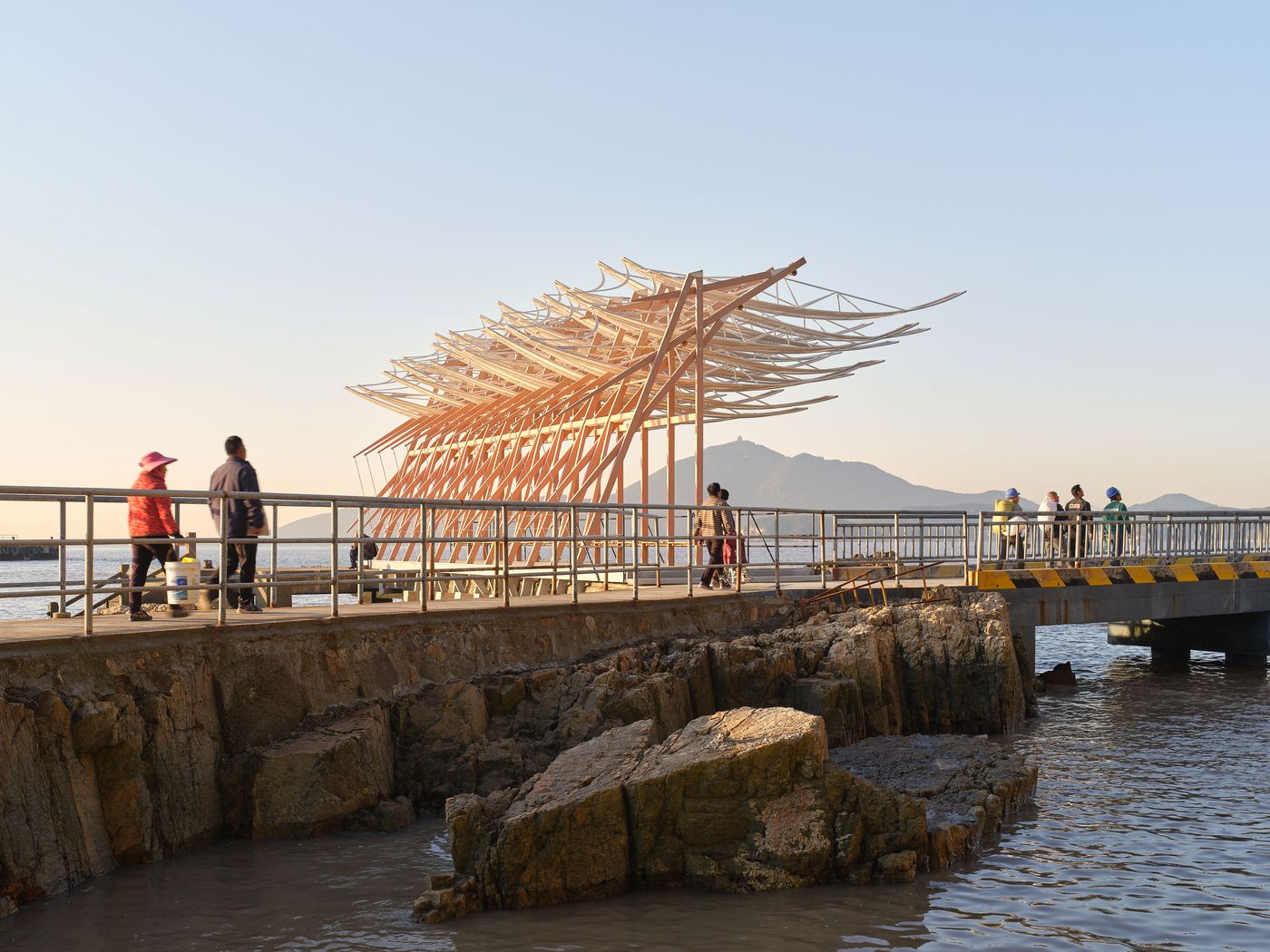
Photography by Zhang Yong.
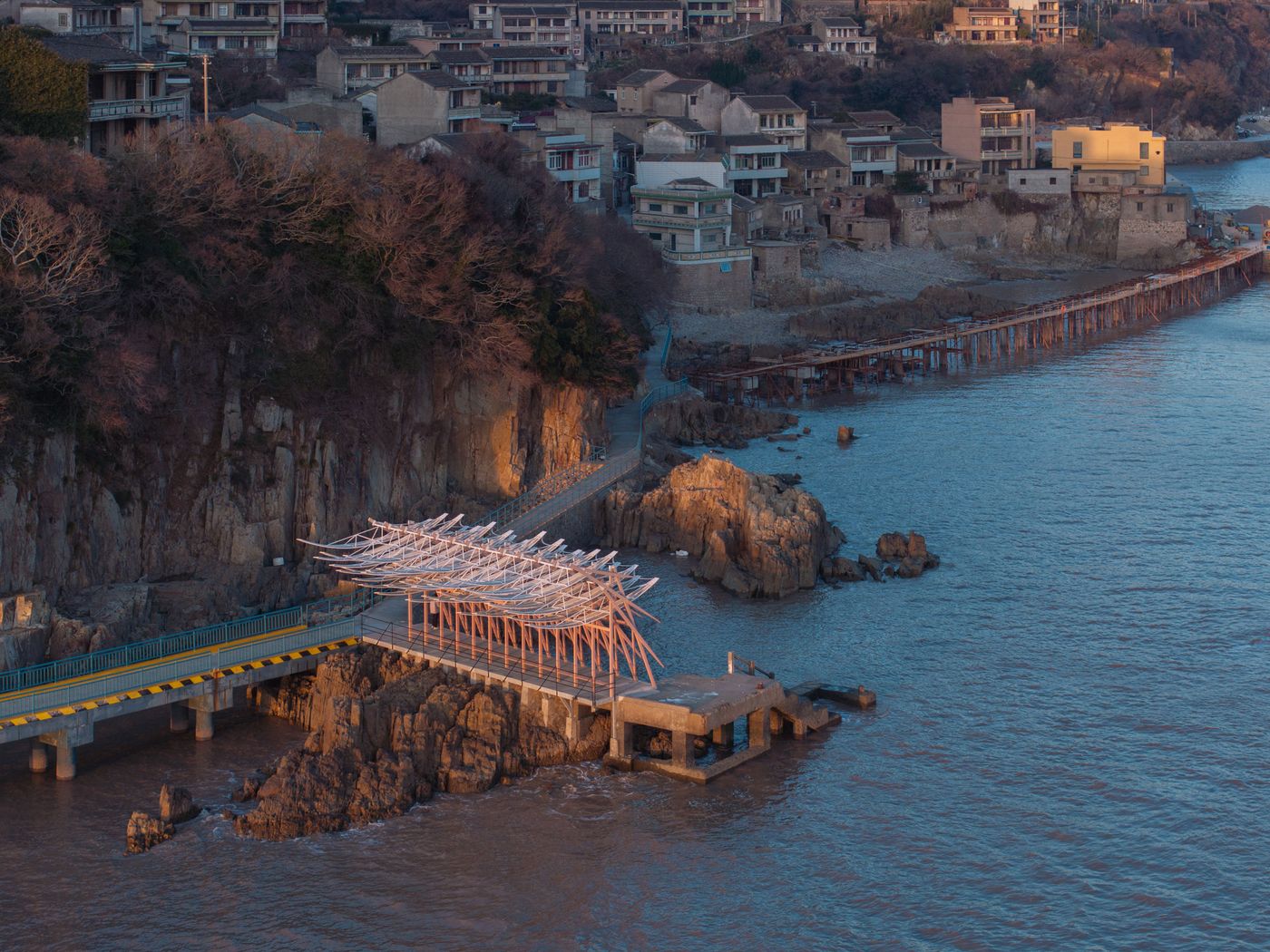
Photography by Tian Fangfang.
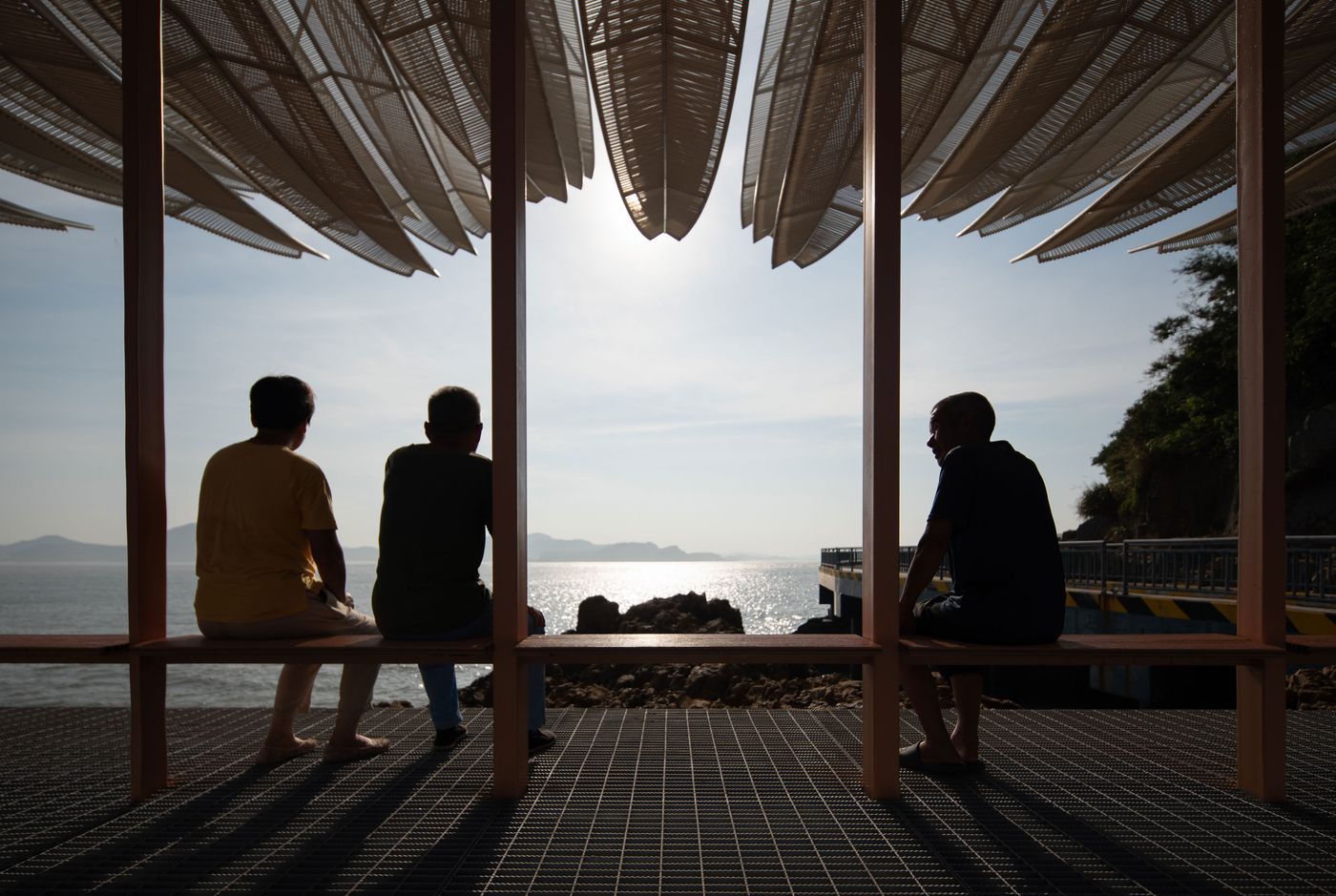
Photography by Liang Wenjun.
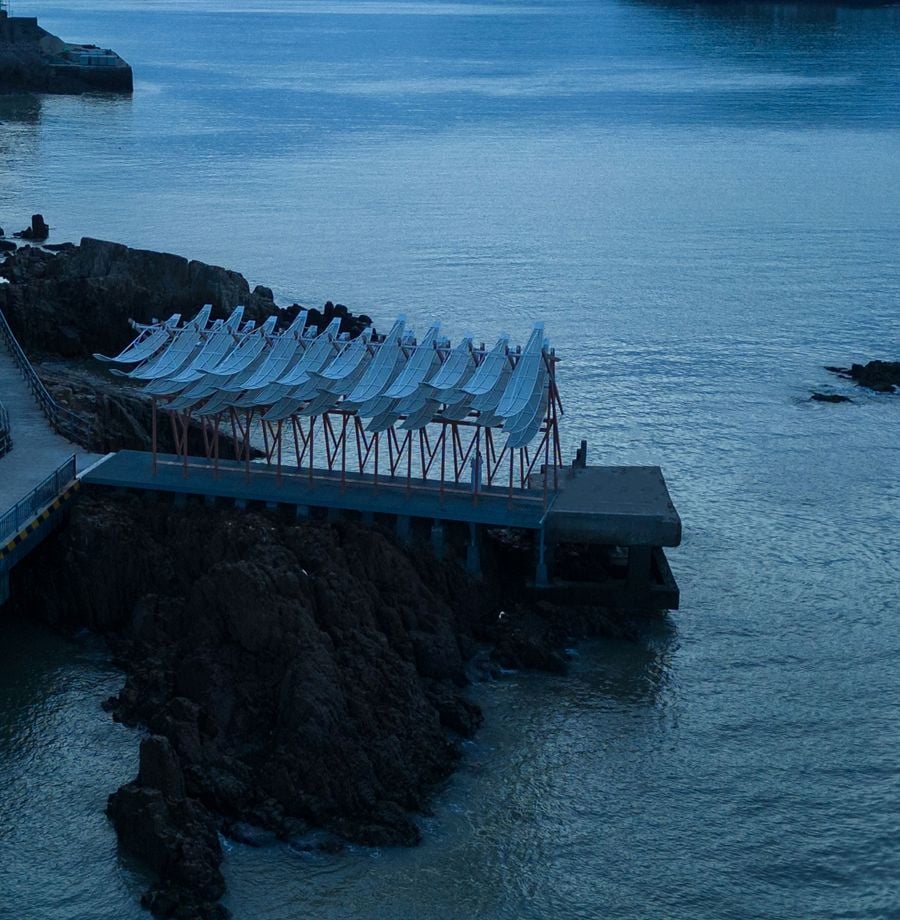
Photography by Liang Wenjun.
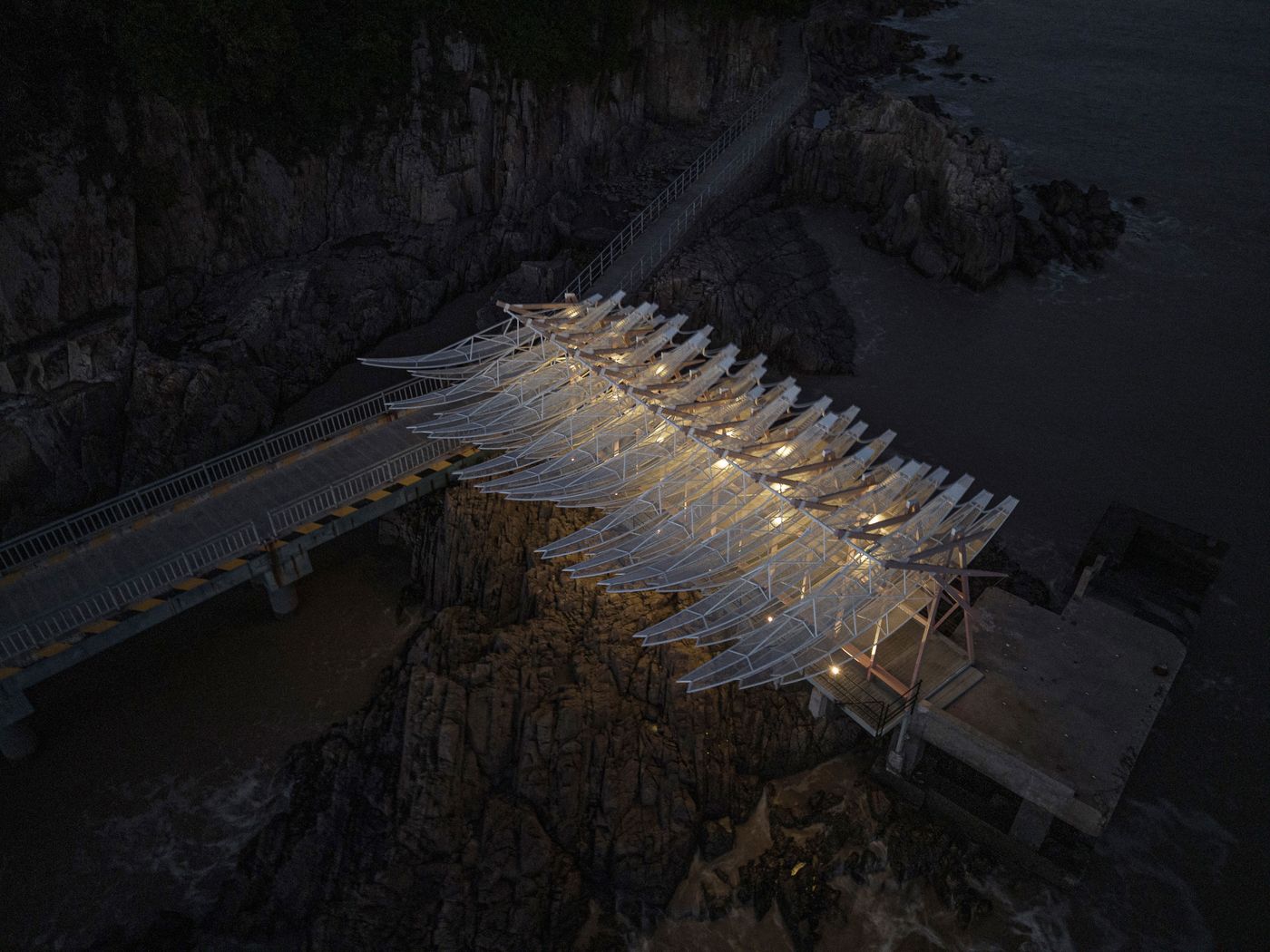
Photography by Liang Wenjun.
